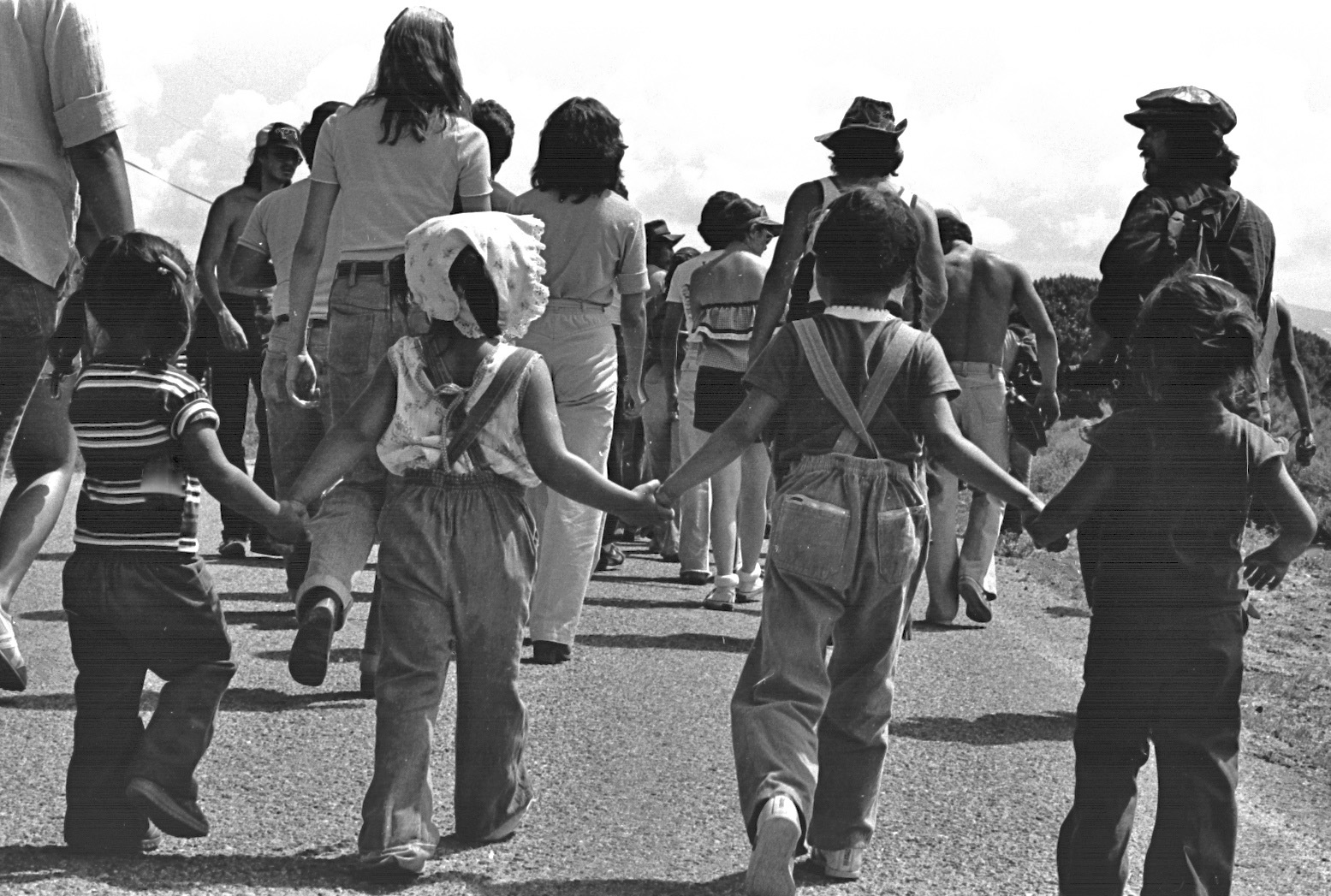
Story
La Sierra
The residents of the San Luis Valley have fought for generations for their historic rights to land and water on La Sierra.
To celebrate the 100th anniversary of The Colorado Magazine, we’ve selected some of our best articles from the last hundred years to republish online. This article was originally published in the Spring 2015 edition, and has been reproduced here as it was originally published.
On August 18, 1980, in a tiny, windowless adobe building in the hamlet of El Rito, Colorado, the leaders of the Land Rights Council of San Luis called a meeting to introduce their new legal strategy. Shirley Romero Otero, Ray Otero, and Apolinar Rael spoke passionately of the injustice of 1965, when the district court took away their community’s historic land rights to La Sierra, a 77,500-acre mountainous common land. El Rito—also called San Francisco—sat at the foot of La Sierra, just east of San Luis. For the “mountain people” of El Rito, La Sierra shaped every aspect of life—diets, shelter, recreation, history, and spirituality. Losing legal access was devastating to El Rito and the nearby communities of San Luis, San Pablo, San Pedro, and Chama. Now, the activists called on them to join their lawsuit and win back their rights.
When asked to sign on as plaintiffs, however, those in attendance responded with silence. The American legal system had done them wrong in the past—why would they trust it now? Finally, a woman no taller than four feet, a victim of childhood polio, steadied her crutches in both hands and rose to her feet. Her squeaking metal crutches and her chastising words broke the deafening silence: “Bueno cabrones, si ustedes hombres no tienen los huevos para firmar, dejame pasar.” (Fine, if you men don’t have the balls to sign, get out of the way and let me pass.) Agatha Medina’s husband, Ray, followed her to the front. Others soon did the same. The movement was gaining momentum, with women emerging as some of its most important leaders.
The advent of the Land Rights Council (LRC) and the lawsuit, Rael v. Taylor, represented a critical turning point in the San Luis land rights struggle. It signaled the revival of a long tradition of resistance—a tradition with roots in the 1870s. To understand this history of resistance, one must go back to 1843, when New Mexican Governor Manuel Armijo awarded the million-acre Sangre de Cristo Grant under the Mexican land grant system. By 1847, Charles Beaubien, a naturalized Mexican citizen, owned the grant and was offering settlers free individual lands, along with rights to access a 77,500-acre mountainous common land known as La Sierra. La Sierra would remain private property, but the San Luis community retained legal rights to use the land.
By 1851, southern Colorado was American territory, and settlers, now Mexican American, had established San Luis and the surrounding villages—all under Mexican-era land agreements and customs. In 1863, Beaubien recorded these communal land rights in what would later be called “the Beaubien Document.” This Spanish-language document states that residents possess rights to La Sierra—to hunt, fish, collect wood, graze their sheep, and recreate. Its validity would be at the heart of the ensuing legal conflict.
In the next century, locals developed a reverence for and dependence on La Sierra. Though outsiders challenged the community’s unique land rights, the people defended their relationship with La Sierra time and again. In 1960, however, a formidable foe arrived. Intending to profit from the trees on La Sierra, Jack Taylor acquired title to the land and began fencing out local residents, even hiring armed guards. A veritable range war ensued as local activists fought back on the ground and in the courts. Taylor took the community to court, and in 1965 the district court ruled in his favor. While small-scale resistance never subsided, community-level activism ebbed, as the economic and psychological effects of losing legal access to La Sierra took hold.
By the early 1970s, dazzling social and political changes had created an atmosphere ripe for protest. The Vietnam War, the War on Poverty, and the civil rights movement had carved a new political landscape. Colorado had become a hotbed of Chicano activism with boycotts, walkouts, Chicano-run newspapers, and the fiery rhetoric of Corky Gonzales. In San Luis, activists seized this energy. The San Luis land rights movement would become one of the most successful components of Colorado’s Chicano Movement.

Children of the Chicano Movement march in San Luis to support the Land rights Council.
Apolinar Rael, an 82-year-old repository of community history, culture, and wisdom, determined that the LRC would achieve justice in the courts. He believed that a racist court produced the 1965 ruling, and if they could just present their case again, they would achieve different results. The legality of the Beaubien Document was central to his belief that they could win. He also had a backup plan. If the courts failed, Rael said he would be the first to pick up his rifle and fight. While Rael supplied the inspiration, Ray Otero and Shirley Romero-Otero provided the organizing genius, political savvy, and energy needed to revive the community’s longstanding relationship with La Sierra. A movement was reborn.
Through decades of litigation, the LRC and their dedicated attorneys persevered. In 2002, Colorado Supreme Court Chief Justice Mary Mullarkey declared it “the height of arrogance and nothing but a legal fiction” for the Court not to interpret the Beaubien Document in its proper historical context. Though legal details are still being sorted out, the wisdom of the elders and the community’s unfaltering devotion to La Sierra prevailed. Since 2004, dozens of descendents of the original heirs have received keys to La Sierra, and the mountain is once again being accessed for firewood, timber, and grazing.

